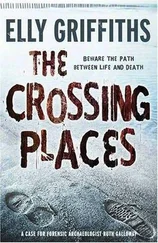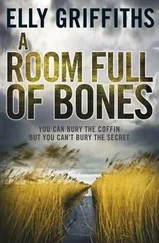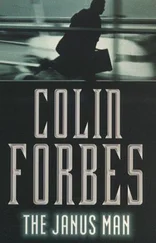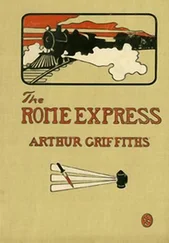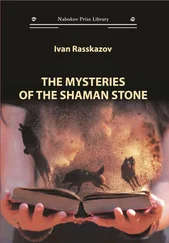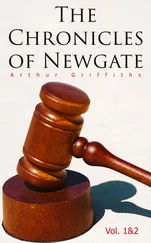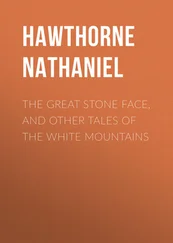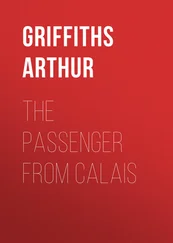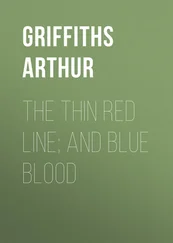He leads the way towards the main entrance of the house. Standing on its own, impressive and slightly surreal, is a massive stone archway. As they pass underneath Ruth sees that an inscription has been carved into the stone: Omnia Mutantur, Nihil Interit . Ruth is a comprehensive-school girl: she has never studied Latin. ‘Omnia’ means all or everything, doesn’t it? ‘Mutantur’ sounds like ‘mutated’ so maybe it means transformed or changed. What about the rest of it? ‘Nihil’ has a nasty, final sort of sound, like ‘nihilism’.
Behind the archway, wide steps lead up to an impressive portico: columns, pediment, the lot. Ruth walks through the stone porch (the door has been taken down) and finds, on the other side of the wall, utter desolation. The interior of the house has vanished, leaving only rubble and churnedup stone. The occasional staircase and doorframe still stand, looking unreal, like stage scenery. Here and there, Ruth can see patches of wallpaper on half-demolished walls and stray pieces of furniture, washed up like flotsam and jetsam: a filing cabinet, a ceramic bath, a fridge door still sporting its jaunty magnets, ‘You don’t have to be mad to work here’, ‘There’s no I in Teamwork’.
‘Building work’s well advanced,’ she says.
‘Yeah,’ Ted smiles sardonically, ‘Edward Spens is in a hurry.
He doesn’t like archaeologists slowing things down.’
‘The arch is very grand.’
‘It’s staying apparently. Going to be a feature in the new building. Spens reckons it gives the place class.’
‘Any idea what the inscription means?’
‘Are you kidding? I went to school in Bolton. Watch your step here.’
Behind the doorway the ground drops away sharply. All that remains of what must have been the entrance hall is a narrow ledge, still paved with black and white tiles, chipped and discoloured. In front and directly underneath the doorstep is a trench. Ruth recognises archaeologists’ handiwork at once. The sides are perfectly straight and a red-and-white measuring pole marks the depth. A young woman in a hard hat is standing in the trench, looking up at them.
‘This is Trace,’ says Ted, ‘one of the field archaeologists.’
Ruth knows Trace by sight. She’s a familiar figure on summer digs and she also works at the museum. She is just the sort of woman who makes Ruth feel inadequate – whippet-thin, wearing a sleeveless jerkin, her muscles standing out like whipcord. The hair protruding from the hat is dark purple.
‘Where are the bones?’ asks Ruth.
Trace points to the far end of the earth wall.
‘Right under the main doorway,’ says Ted, reading her thoughts.
She sees it at once – the grave cut. Below the stone doorstep (still in place) and a thin layer of cement, the earth has been churned up. Normally you would expect to see a layer of brick followed by foundation rubble, but here sand, stones and earth are mixed together like builder’s soup. These layers have been disturbed, not that long ago, and the line cutting through them is called – Ruth realises for the first time how ominous the name is – the grave cut. And, sure enough, below the disarranged earth lie the bones.
Ruth kneels down. They are human, she sees that at once.
‘Have you called the police?’ she asks. ‘The coroner?’
‘No,’ says Trace, rather sullenly. ‘We thought we’d wait for you.’
‘What do you think?’ asks Ted, leaning over her shoulder.
‘They’re human, they look like a child’s. Hard to tell the age.’ Recently unearthed bones are fairly easy to date but after that, as Ruth knows to her cost, analysis is a difficult business. Though the grave cut is recent, the bones could be anything from fifty to several hundred (maybe even thousand) years old. She is looking at a cross-section, the bones suspended in the side of the trench. They appear to be crouched in a foetal position. She looks at Ted. ‘No skull,’ she says.
‘No,’ he says chattily, ‘we noticed that.’
All of a sudden, Ruth knows she is going to be sick again. She lurches away from Ted and retches violently in the corner of the trench. Trace looks at her with horror.
Ted, though, seems undisturbed. ‘Are you all right?’ he asks. ‘Would you like some water?’
‘Yes please.’ Ruth’s head is pounding and she knows that she is shaking. Why did this have to happen here? It will be all over the department by tomorrow. She crouches down, trying to control her breathing.
‘Here.’ Ted has returned with a battered-looking water bottle. Ruth takes a cautious sip and feels her insides settle slightly. She must stay calm. Breathe.
‘I’m sorry,’ she says, ‘must have been something I ate.’
‘Motorway food,’ says Ted sympathetically.
‘Yes,’ says Ruth, straightening up. ‘We’d better call the police.’
‘Shall I dial 999?’ asks Trace, sounding animated for the first time.
‘I’ve got a number,’ says Ruth, getting out her mobile phone and dialling.
‘Ruth!’ says a surprised voice, ‘why are you calling?’
‘We’ve found some bones, Nelson,’ says Ruth. ‘I think you’d better come.’
By the time Nelson arrives the builders have gone home, leaving only the very irritated foreman. ‘Edward Spens wants this site clear by the end of the week,’ he keeps saying.
‘I’m sure he wouldn’t want to get in the way of a police inquiry,’ says Ruth tartly. The foreman looks as if he isn’t so sure about this.
Ruth hears Nelson’s Mercedes screeching around the curved driveway. She is not sure how she feels about Nelson. She likes him, more than likes him, but she knows that as her pregnancy becomes more obvious things are going to get very difficult between them. Still there is no reason for Nelson to suspect for a few weeks yet. Lucky she has always worn baggy clothes.
Then Nelson himself appears, framed briefly in the doorway. At his shoulder is a policeman called Clough, whom Ruth knows by sight. Nelson speaks briefly to Clough and then strides along the narrow walkway, jumping lightly into the trench. This is Ruth’s main memory of him; always hurrying, always eager to get on to the next thing. But she knows that he can be patient when it comes to an enquiry. Almost as patient as an archaeologist.
‘Who’s in charge?’ is his first question.
‘Me’, Ruth wants to say, but the foreman bustles forward.
‘Derek Andrews,’ he says, ‘foreman.’
Nelson grunts and looks past him, to where Ruth is standing.
‘Where are the bones?’
‘Here,’ says Ruth. During the wait she, Ted and Trace have exposed more of the bones and she has photographed them, using the measuring pole as a scale. The skeleton is now protruding like a macabre mosaic. Nelson squats down and touches a bone gently with the tip of one finger.
‘Are you sure they’re human?’ he asks.
‘Pretty sure,’ says Ruth. ‘There may be animal bones mixed in there but I think I can see tibia and fibula.’
‘Are you going to take them out?’
‘I want to expose the whole skeleton first,’ she says. ‘Remember what I said on the Roman site, about context?’
Nelson straightens up. ‘How do we know these bones aren’t Roman?’ he says. ‘Or bloody Stone Age, like the other ones.’
‘Iron Age,’ says Ruth, through gritted teeth. ‘We don’t know for sure,’ she continues coolly, ‘but the grave looks fairly recent. See the lines cutting through the strata? I guess the body was buried when the walls were built.’
‘When was that?’ asks Nelson.
‘Well, the house looks Victorian. About a hundred and fifty years ago maybe.’
‘You call that recent?’
‘What was on this site before?’ asks Clough.
Читать дальше


